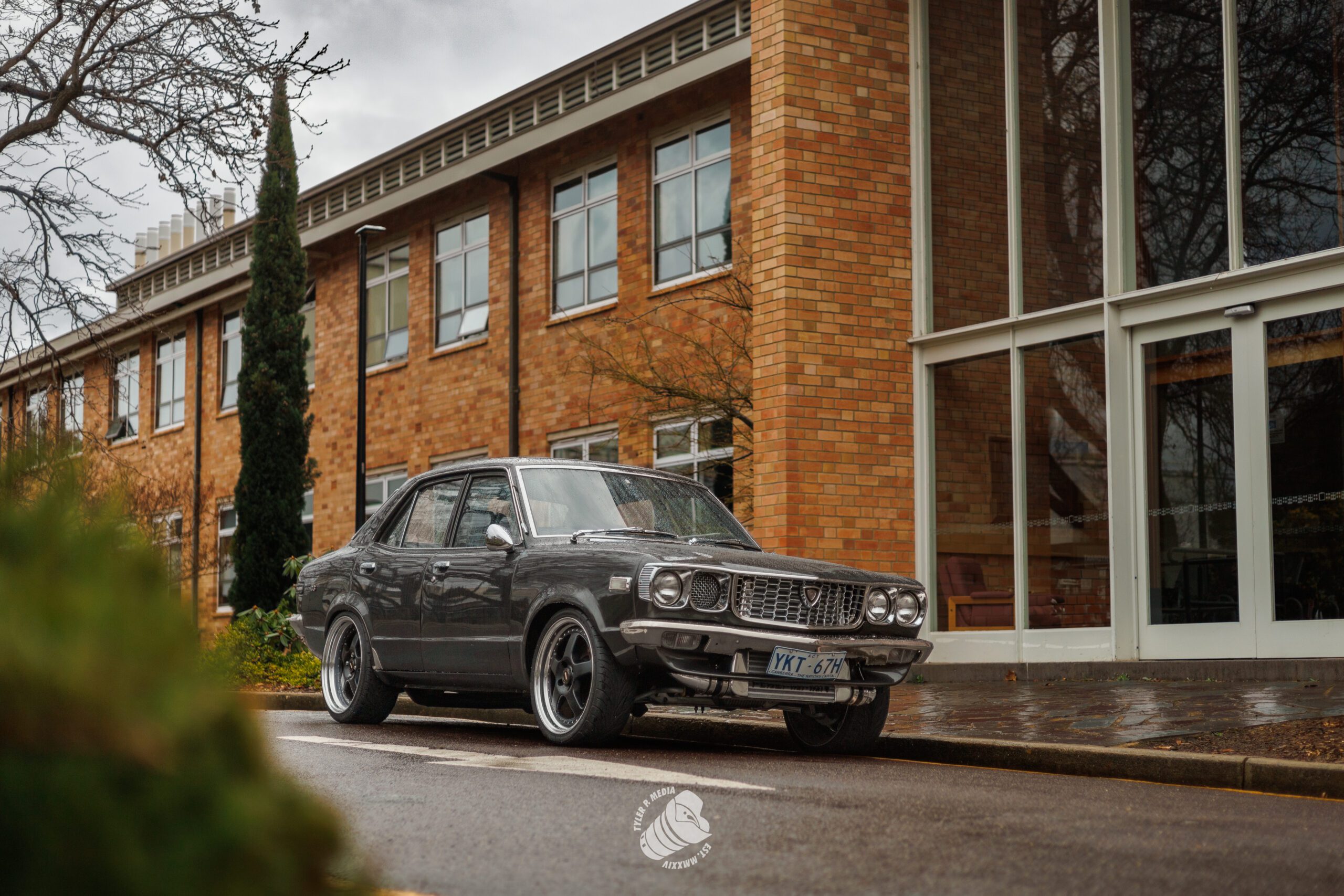It’s late winter in the nation’s capital and The Carlective team are gathered in pouring rain. Cameras are out, lights are in action and some crew brave an end of season head cold and flu to work together in getting another great story to print.
The former John Curtin School of Medical Research (superseded in 2003) is located on Balmain Crescent on the Acton Peninsula, part of the sprawling Australian National University campus. The area holds a unique moment in time where the modern meets the past, as buildings of the 1950’s collide with newer variants that, at the time, had to accept change around the 1970’s to compete with the world’s best and brightest.

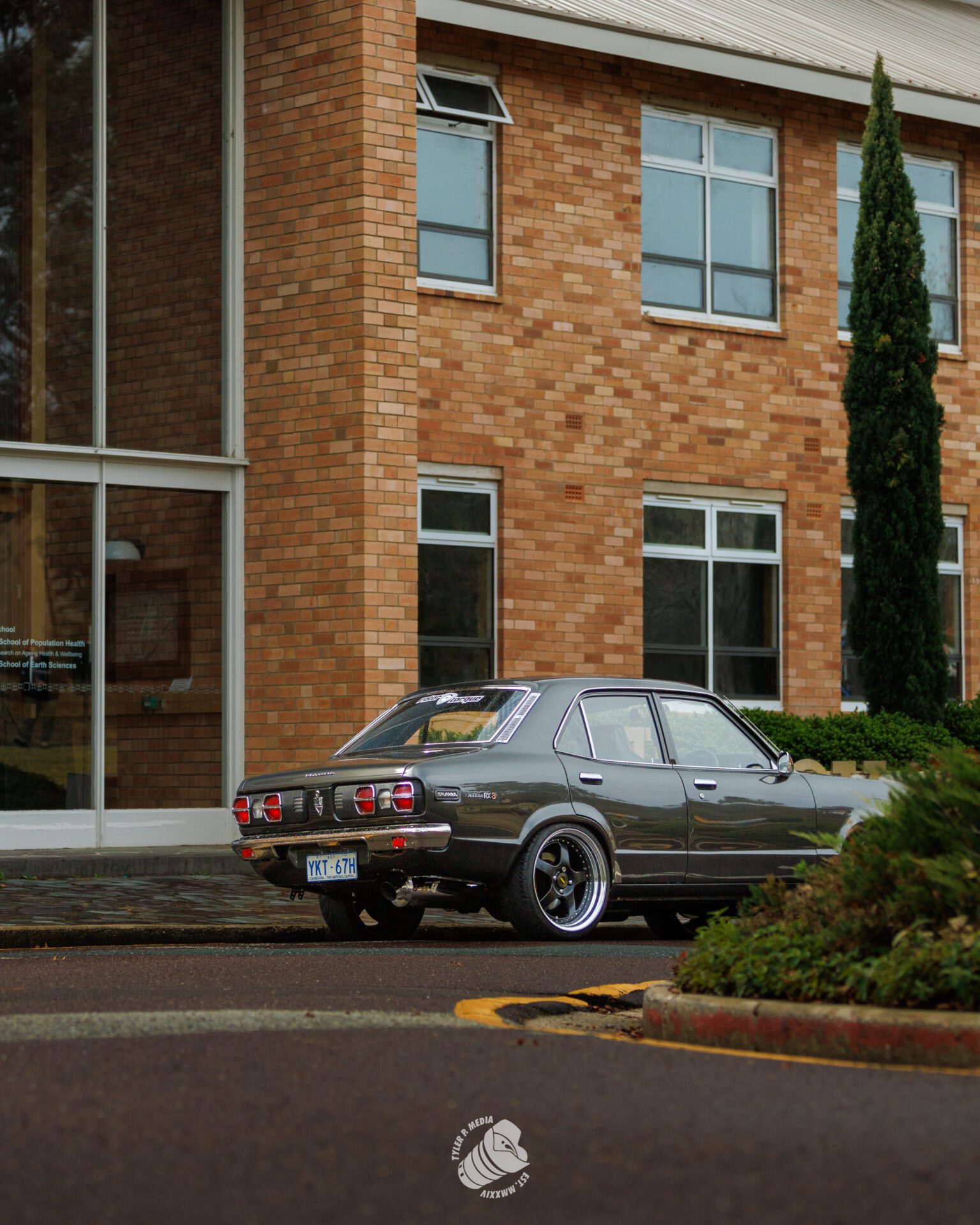
It’s a change of optimism and innovation that Mazda can surely relate. Following the successful introduction of the Mazda R100 into the Australian car market in 1970, the power of the rotary put down firm roots on roads and in hearts that developed into the iconic culture we know today. But if the R100 was the appetizer, then the RX series that followed was a main course delivered every night of the week with a love and passion identified here in Jason’s 1974 Mazda Series II RX3 sedan.
“I admire Mazda for having the balls back in the day to try the rotary motor. That’s why I love them. They’re the only manufacturer that went into full production with rotary motor cars. You have the odd one here and there, with other brands, but no one’s like Mazda”
Arriving late in the piece, Jason has been into rotaries since teenagerhood in the 1990’s. He was bred on fast fours as a child with a Dad who undertook nut and bolt restorations from scratch, always tinkering where time applied. If generational change was on the horizon in Jason’s family, it was no more present then in the garage.
“Dad initially wasn’t a fan, because he didn’t really know much about rotary motors. He’s more of a Ford V8 type person. But I took him for a spin in it, when I had the last motor in and yeah, he shouted! He couldn’t believe it. That something so small capacity made so much power”
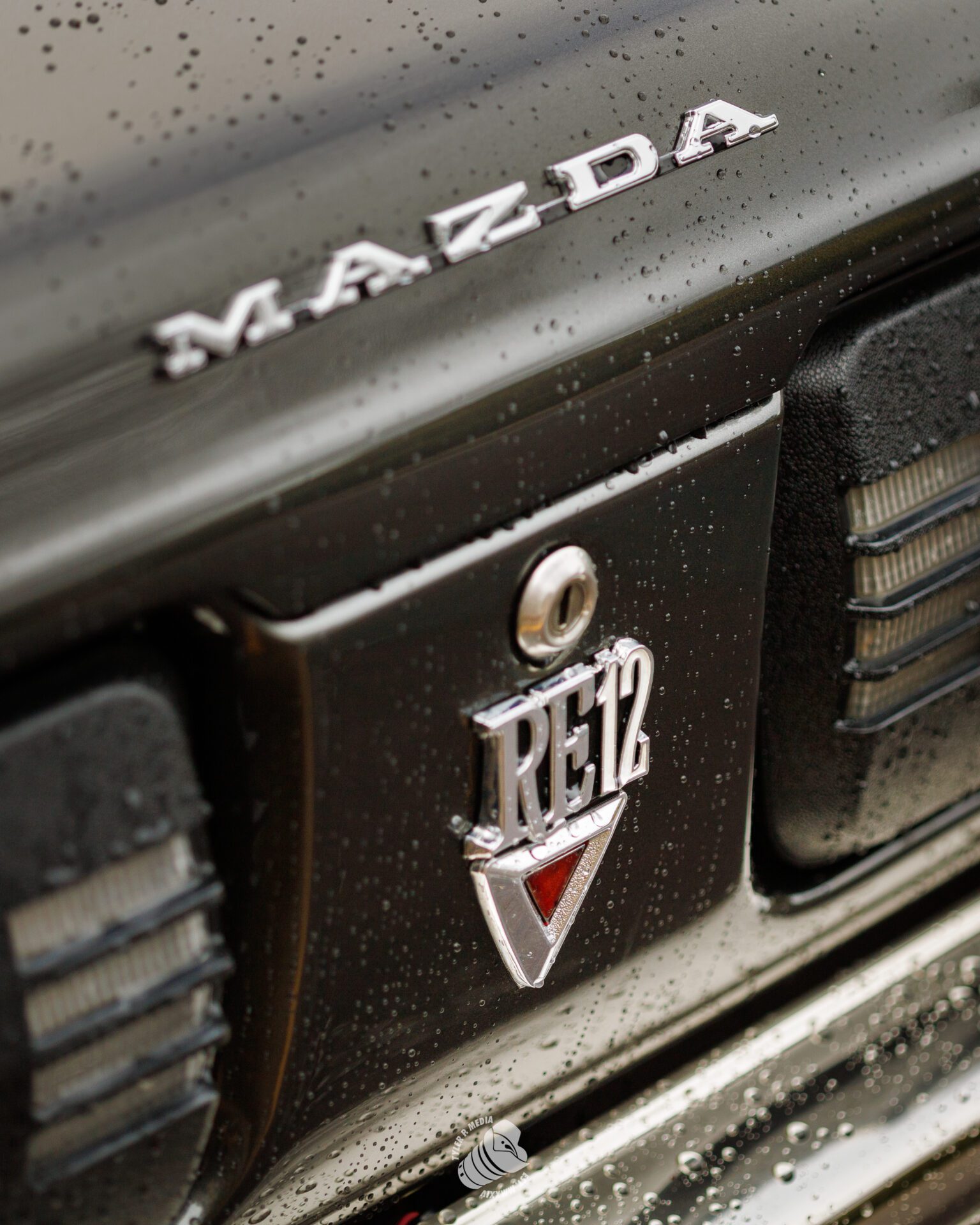

In his own journey, Jason became a man of the Datsun 1600. But watching the RX platform increase in value and following the heartstrings of his youth, he undertook a year’s worth of searching to land on the pride and joy we see here today. Forty thousand dollars and a transfer from Sydney to Canberra later, he entered into the world of the Mazda rotary enthusiast.
Over ten years of ownership, much has occurred to the car. There have been upgrades to the front and rear suspension and the drivetrain. It’s on its third motor, a genuine 12A. Every nut and bolt has been pulled apart and put back together. Currently it’s not running a boost option with a rev limit of 5,000, but in a thousand kilometers time it will return to Sydney to correct this and add back some sweetener to an already packed journey. We note the gorgeous gunmetal grey shell, which Jason suspects isn’t original.
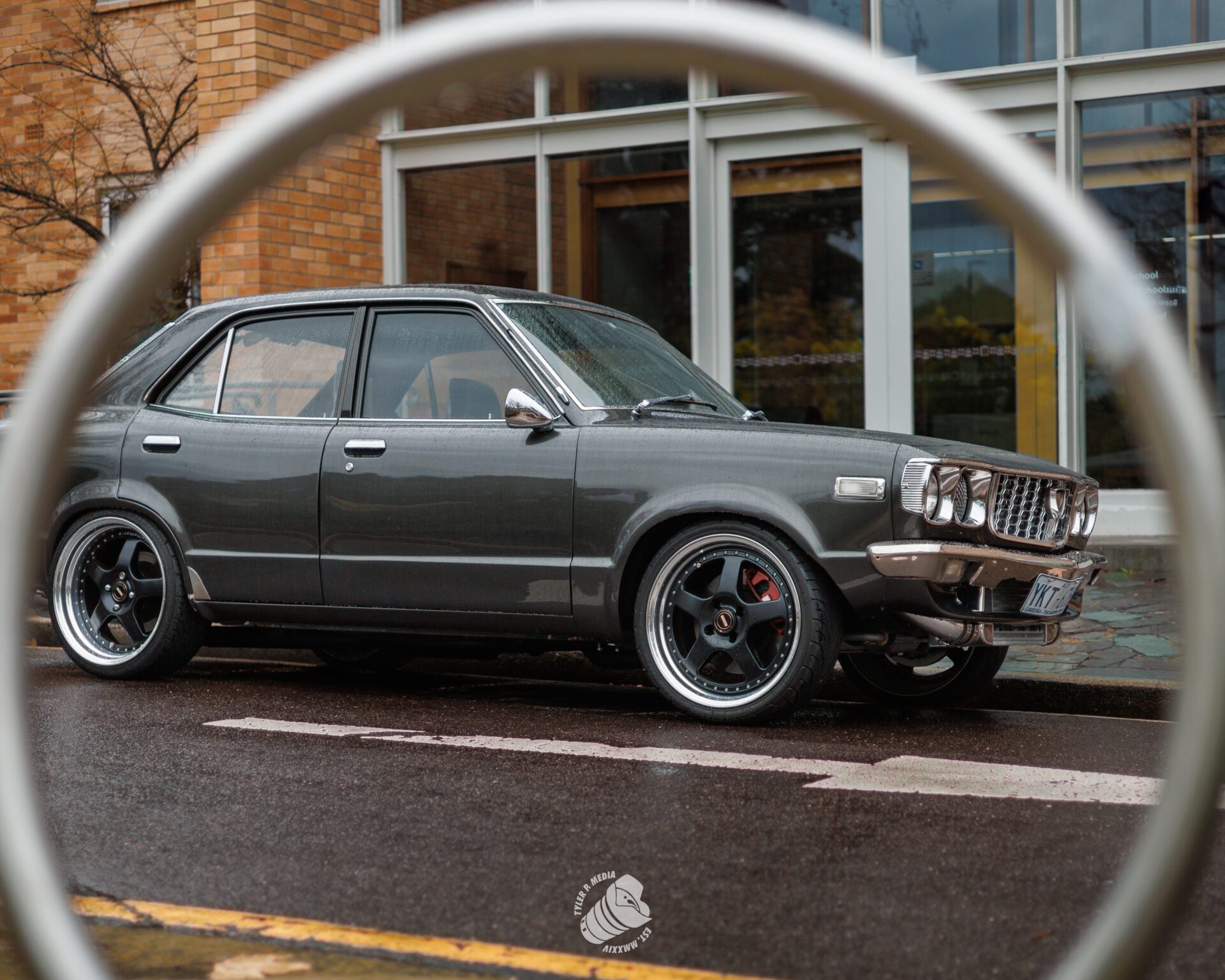
“I actually came across some photographs of it. It was sitting on the back of a tow truck with Queen Street stickers up the side because it’s the same color as when I bought it. If you pull it apart in the rear, under the back seat, it’s all white. I assume it was actually white from the factory and it looks like it was the first coat ever put down. I’ve seen hints of green and red, too. Currently it’s like a gunmetal grey, called graphite. I myself haven’t done the anything to the paint – that was all the previous owner and it’s been painted that color for 20 years”
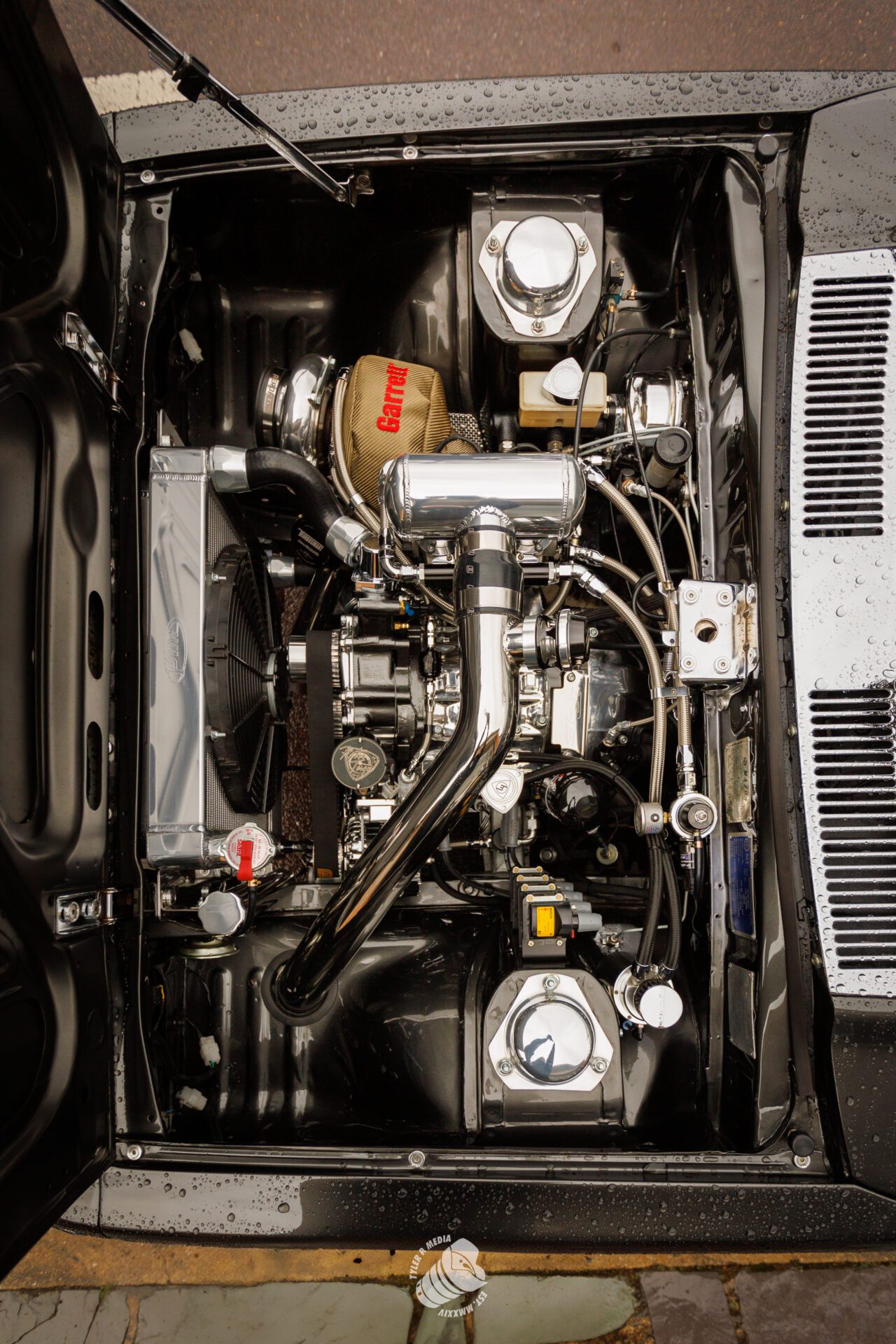
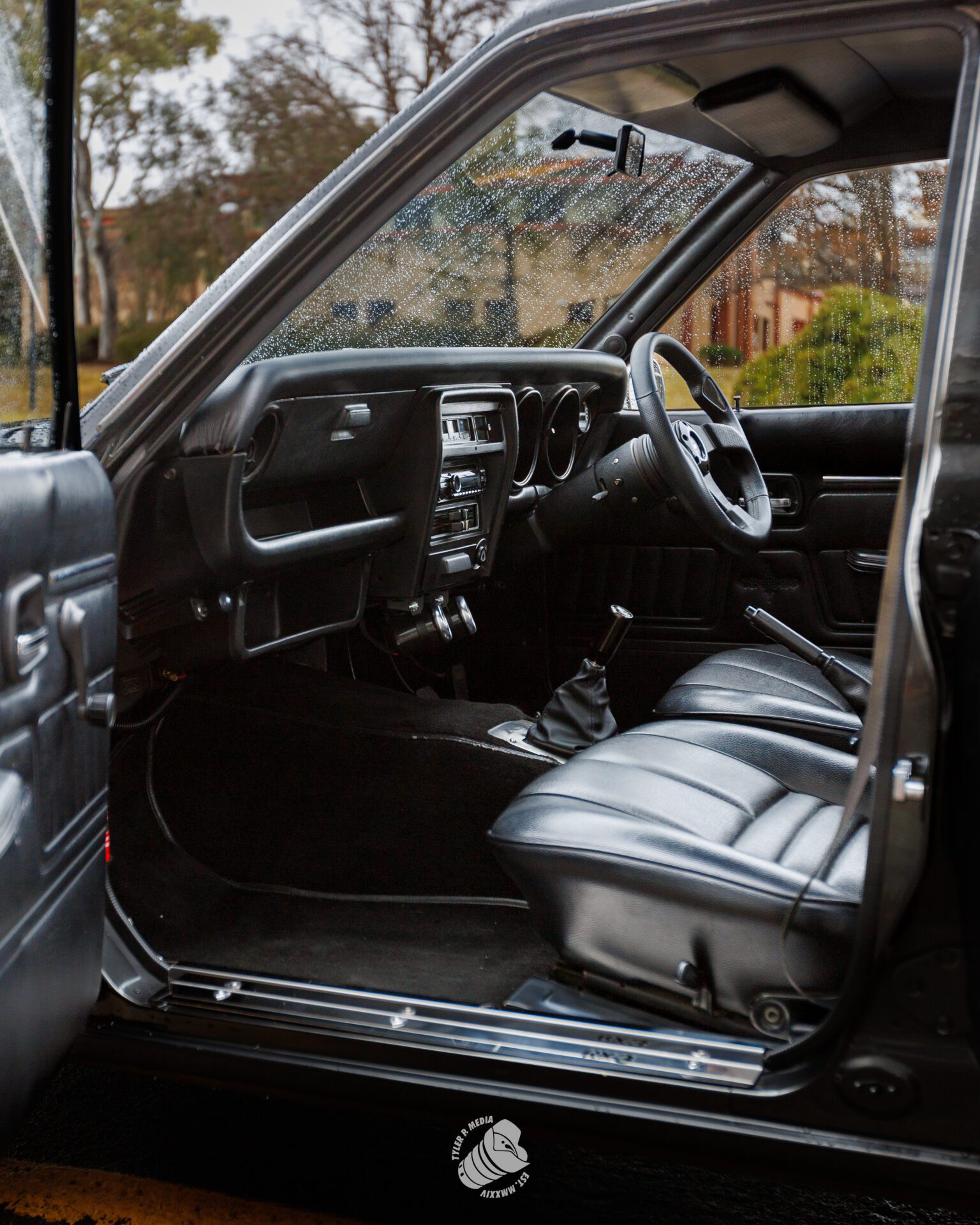
Mystery repainting aside, Jason is an optimist when it comes to any further work. Aiming for plausible expectations, he is seeking 400 horsepower at the rear wheels and a good tune before just enjoying the RX3 as a weekender around the nation’s capital. He explains that he doesn’t wish to get carried away in a drag car that you never drive around the streets; leaving the drag strips, tracks and numbers games to others.
“When I was a teenager, you’d hear rotary motors and you didn’t really understand them and know much about them – they just sounded so different. Then once you actually understand it and you get a boosted one and go for a drive, you’re like, holy shit. It scares the bejesus out of you at times! I shake like a leaf when I start the car up sometimes, when on boost. You immediately know what you’re in for”
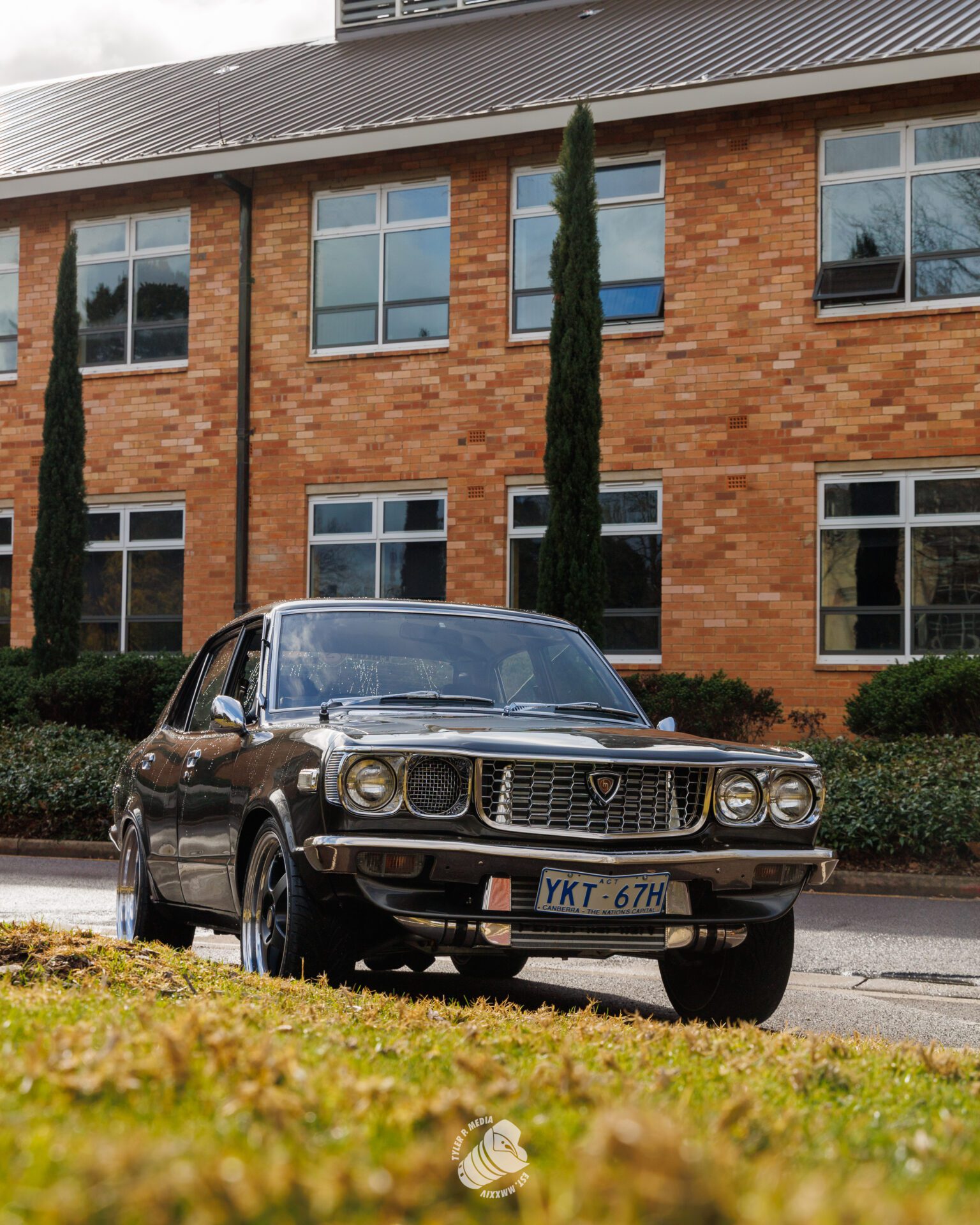
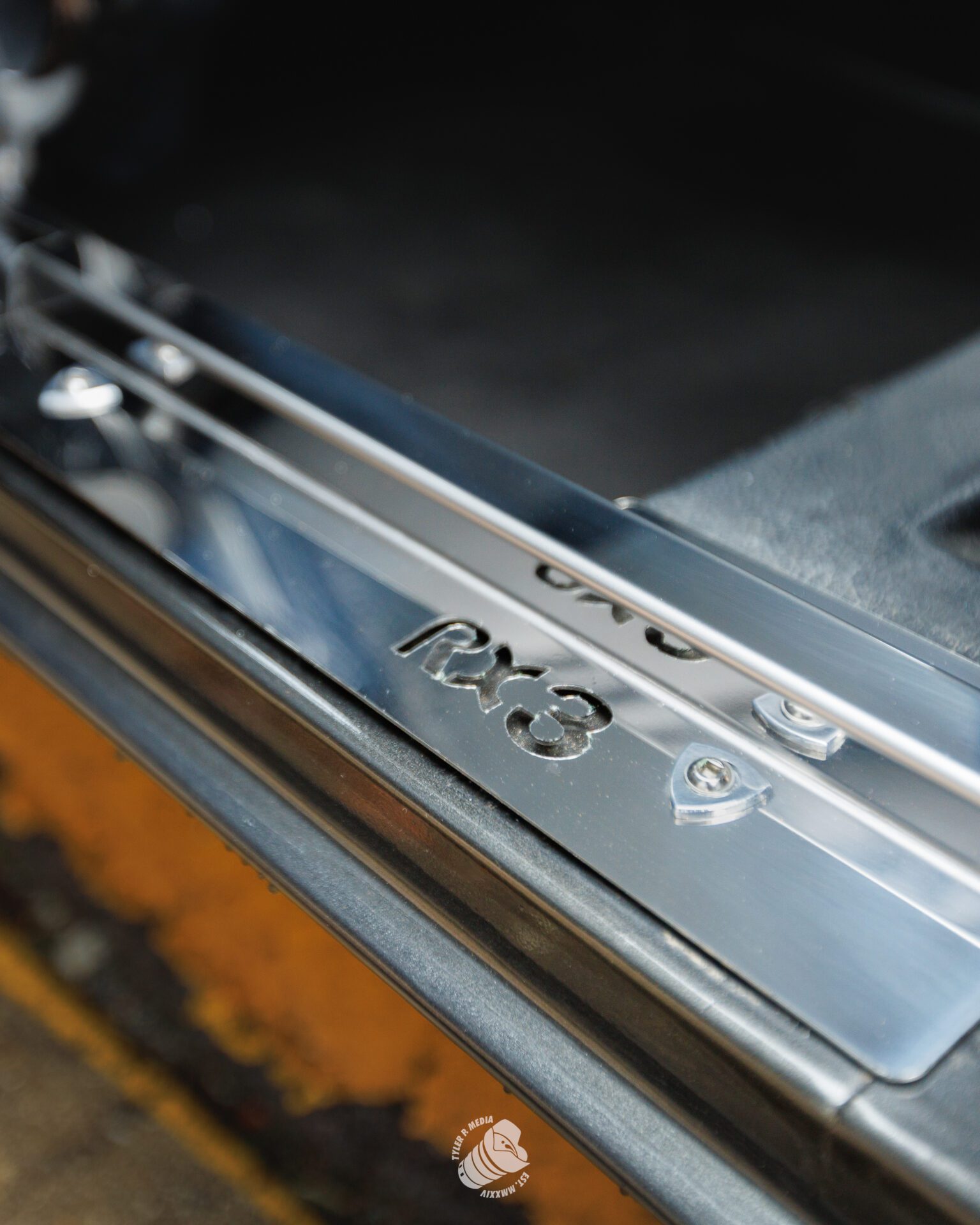
As the years tick forward, Jason is well aware of the exhilarating feel a rotary ownership brings behind the wheel. He ironically compares the rarity of a once common Australian vehicle to that of a Hyundai Excel, once prevalent any day of the week but now rare and still favoured by niche groups. Another loss that is perhaps more widely felt is in the design itself, with a comparison to new vehicles lacking any kind of classic detail once found in the RX series. It’s a design that is unlikely to ever make a return in the world of streamlined ideologies.
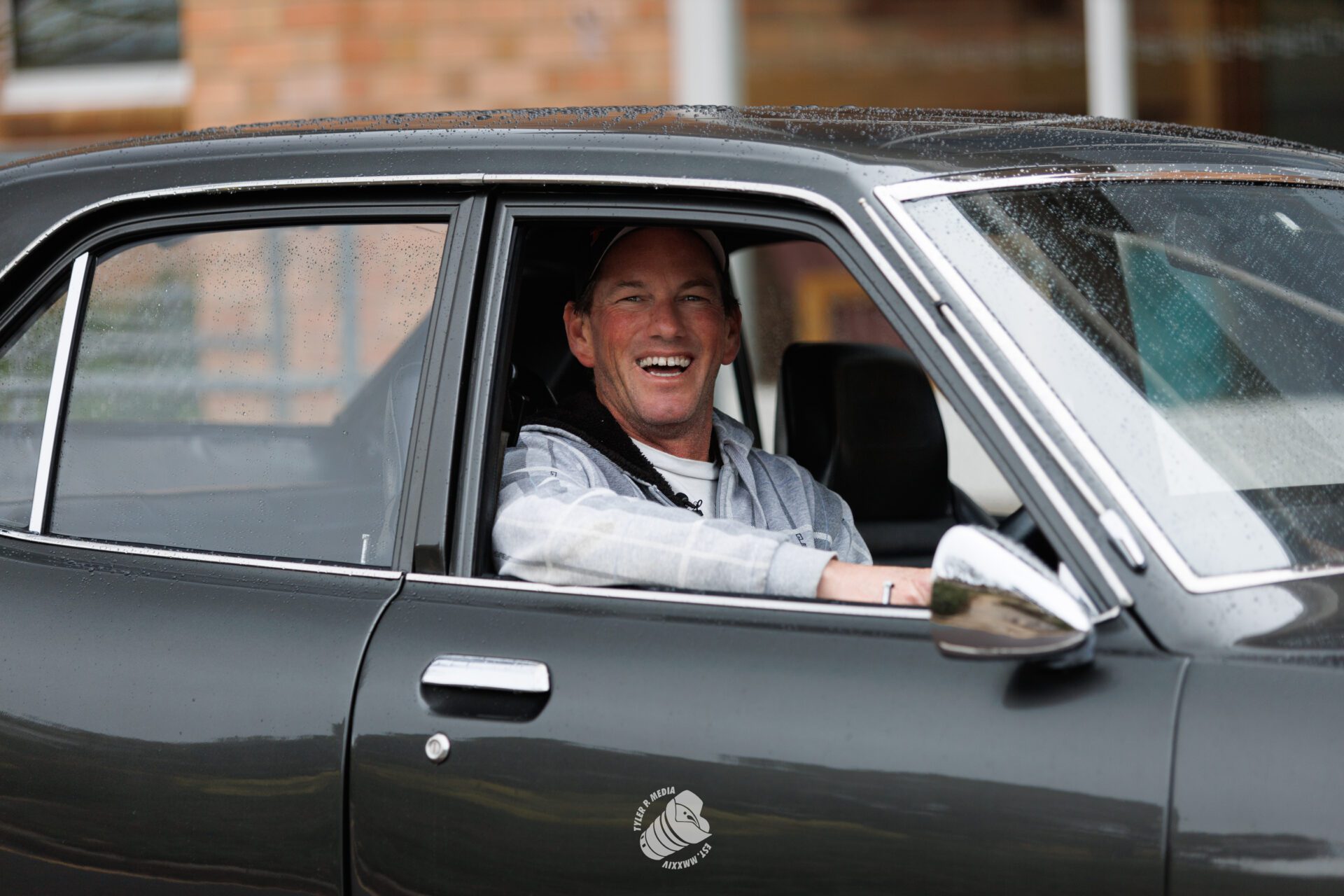
As the weather eases, Jason is back behind the wheel and equipment pack up is underway. The iconic brap of the RX3’s rotary is alive and it’s a soggy drive home on to the outer suburbs, not that Jason is complaining. When approached about whether his partner is often a co-pilot, he points out that it’s dependent on whether the car is boosted or not. A lack of radio and air con doesn’t help the situation, but perhaps its being one with the car that instills some solo appreciation – though we note they both share a common love of horsepower.
“She appreciates it because we grew up together, since we were teenagers. She knows what they have, but she’s just not a huge fan of them. She’s into horses, so a different kind of horsepower, obviously. She’s got one horsepower… and I’ve got 400!”
We can’t argue with that.
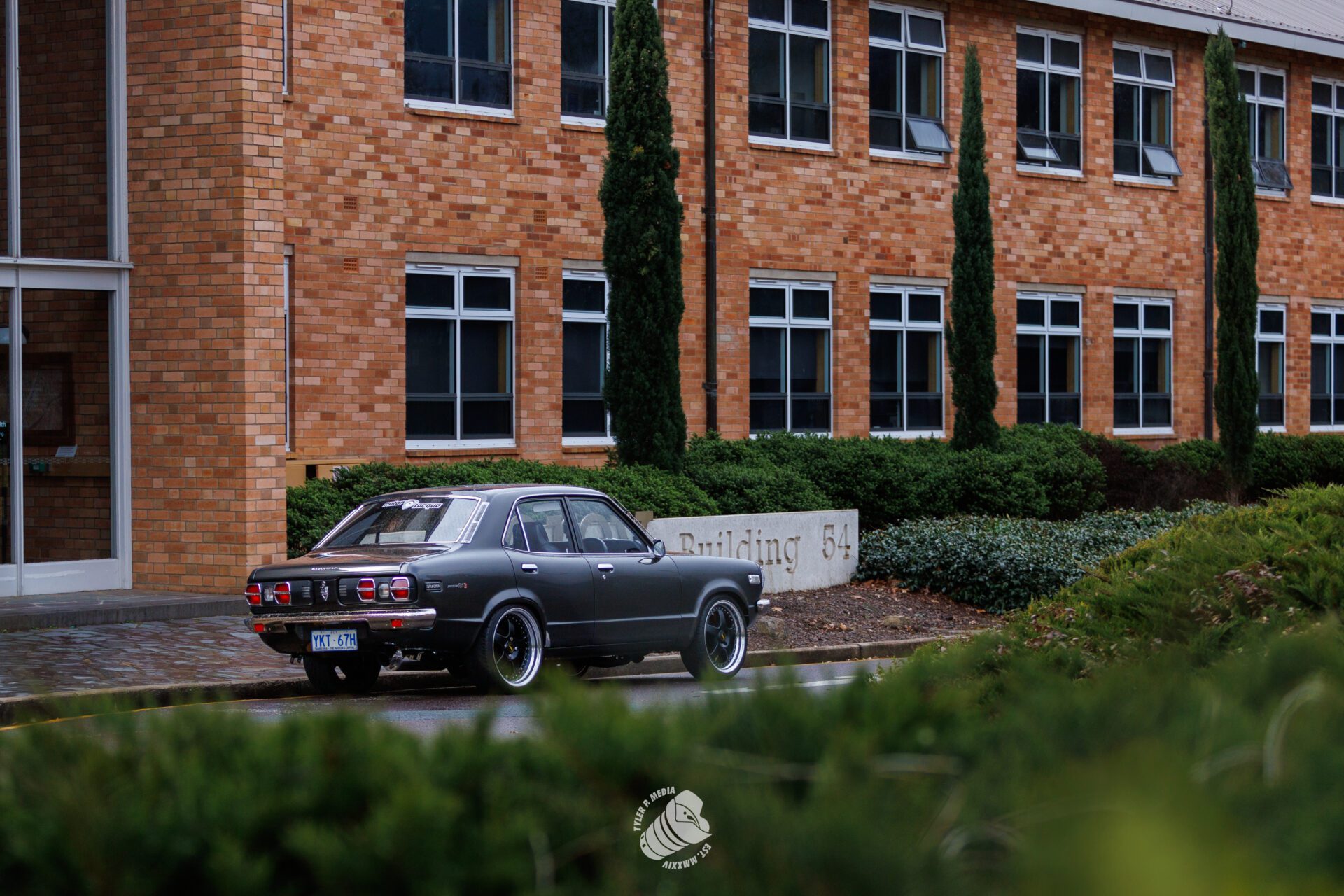
Photographed at the Australian National University by Tyler Parrott of Tylerp.media featuring Jason and the 1974 Mazda Series II RX3 sedan. Article hosted by Kevin Ha at StreetScene. Words, research and story by Justin Bush for MazdACT Stories, August 2024.
For more great content, photography and related articles make sure to check out:
Tyler P. Media
StreetScene
MazdACT
